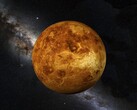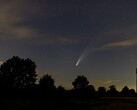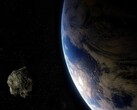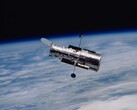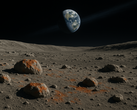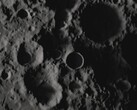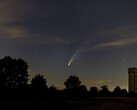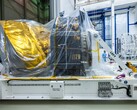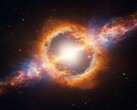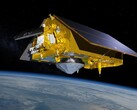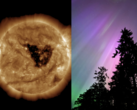The supermassive black hole observed by the Chandra X-ray Observatory has about a billion times the mass of the Sun. It is located about 12.8 billion light-years from Earth. This means that astronomers are seeing it just 920 million years after the universe began. That is, very early in the Universe’s history.
Black holes pull in a lot of matter. The matter swirls around the black hole in an accretion disk and is heated to extreme temperatures as it falls towards the black hole. The heated matter emits radiation.
For supermassive black holes, the heated matter can shine brighter than its host galaxy. The observed shining object is called a quasar. The supermassive black hole in question powers a quasar called RACS J0320-35.
From the observation, researchers discovered that the black hole powering RACS J0320-35 is growing at a rate faster than ever recorded before. When black holes pull in matter, it gets to a point where the inward pull of gravity and the outward push of radiation balance. This point is referred to as the Eddington limit.
Given this black hole’s mass, the researchers came up with two propositions: either the black hole is growing at an estimated 2.4 times the Eddington limit, or it was born with a mass of about 10,000 or more Suns. Black holes, however, are known to be born with a mass less than a hundred Suns.
When the researchers matched the data from RACS J0320-35 with theoretical models, it supported the theory that RACS J0320-35 might indeed be growing faster than the Eddington limit. The jets of particles moving away from RACS J0320-35 also raised questions. The rapid growth rate of the black hole could be the reason for the rare jets.
The findings from this study were recently published in the Astrophysical Journal. These findings could help scientists answer a puzzling question: “How did the Universe create the first generation of black holes?”
Source(s)
The Astrophysical Journal Letters via NASA
Image source: NASA, CXC, INAF-Brera, L. Ighina et al, SAO, M. Weiss, and N. Wolk






